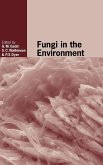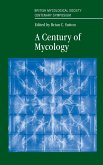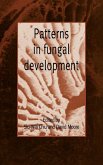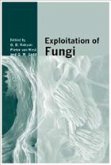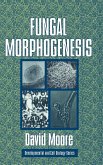Bioremediation is an expanding area of environmental biotechnology, and may be defined as the application of biological processes to the treatment of pollution. Much bioremediation work has concentrated on organic pollutants, although the range of substances that can be transformed or detoxified by microorganisms includes both natural and synthetic organic materials and inorganic pollutants, such as toxic metals. The majority of applications developed to date involve bacteria and there is a distinct lack of appreciation of the potential roles and involvement of fungi in bioremediation, despite clear evidence of their metabolic and morphological versatility. This book highlights the potential of filamentous fungi, including mycorrhizas, in bioremediation and discusses the physiology and chemistry of pollutant transformations.
Table of contents:
1. Degradation of plant cell wall polymers C. S. Evans and J. N. Hedger; 2. The biochemistry of ligninolytic fungi P. J. Harvey and C. F. Thurston; 3. Bioremediation potential of white rot fungi C. A. Reddy and Z. Mathew; 4. Fungal remediation of soils contaminated with persistent organic pollutants I. Singleton; 5. Formulation of fungi for in situ bioremediation J. W. Bennett, W. Connick. Jr., D. Daigle and K. Wunch; 6. Fungal biodegradation of chlorinated monoaromatics and BTEX compounds J. A. Buswell; 7. Bioremediation of polycyclic aromatic hydrocarbons by ligninolytic and non-ligninolytic fungi C. E. Cerniglia and J. B. Sutherland; 8. Pesticide degradation S. E. Maloney; 9. Degradation of energetic compounds by fungi D. A. Newcombe and R. L. Crawford; 10. Use of wood-rotting fungi for the decolourisation of dyes and industrial effluents J. S. Knapp, E. J. Vantoch-Wood and F. Zhang; 11. The roles of fungi in agricultural waste conversion R. Cohen and Y. Hadar; 12. Cyanide biodegradation by fungi M. Barclay and C. J. Knowles; 13. Metal transformations G. M. Gadd; 14. Heterotrophic leaching H. Brandl; 15. Fungal metal biosorption J. M. Tobin; 16. The potential for utilizing mycorrhizal associations in soil bioremediation A. A. Meharg; 17. Mycorrhizas and hydrocarbons M. N. Cabello.
Bioremediation is an expanding area of environmental research and may be defined as the application of biological processes to the treatment of pollution. This book highlights the use of fungi for the treatment of environmental pollutants, including organic chemicals and toxic metals. The chemistry of pollutant transformations is also discussed.
An authoritative account of the application of fungi to the treatment of environmental pollution.
Hinweis: Dieser Artikel kann nur an eine deutsche Lieferadresse ausgeliefert werden.
Table of contents:
1. Degradation of plant cell wall polymers C. S. Evans and J. N. Hedger; 2. The biochemistry of ligninolytic fungi P. J. Harvey and C. F. Thurston; 3. Bioremediation potential of white rot fungi C. A. Reddy and Z. Mathew; 4. Fungal remediation of soils contaminated with persistent organic pollutants I. Singleton; 5. Formulation of fungi for in situ bioremediation J. W. Bennett, W. Connick. Jr., D. Daigle and K. Wunch; 6. Fungal biodegradation of chlorinated monoaromatics and BTEX compounds J. A. Buswell; 7. Bioremediation of polycyclic aromatic hydrocarbons by ligninolytic and non-ligninolytic fungi C. E. Cerniglia and J. B. Sutherland; 8. Pesticide degradation S. E. Maloney; 9. Degradation of energetic compounds by fungi D. A. Newcombe and R. L. Crawford; 10. Use of wood-rotting fungi for the decolourisation of dyes and industrial effluents J. S. Knapp, E. J. Vantoch-Wood and F. Zhang; 11. The roles of fungi in agricultural waste conversion R. Cohen and Y. Hadar; 12. Cyanide biodegradation by fungi M. Barclay and C. J. Knowles; 13. Metal transformations G. M. Gadd; 14. Heterotrophic leaching H. Brandl; 15. Fungal metal biosorption J. M. Tobin; 16. The potential for utilizing mycorrhizal associations in soil bioremediation A. A. Meharg; 17. Mycorrhizas and hydrocarbons M. N. Cabello.
Bioremediation is an expanding area of environmental research and may be defined as the application of biological processes to the treatment of pollution. This book highlights the use of fungi for the treatment of environmental pollutants, including organic chemicals and toxic metals. The chemistry of pollutant transformations is also discussed.
An authoritative account of the application of fungi to the treatment of environmental pollution.
Hinweis: Dieser Artikel kann nur an eine deutsche Lieferadresse ausgeliefert werden.


